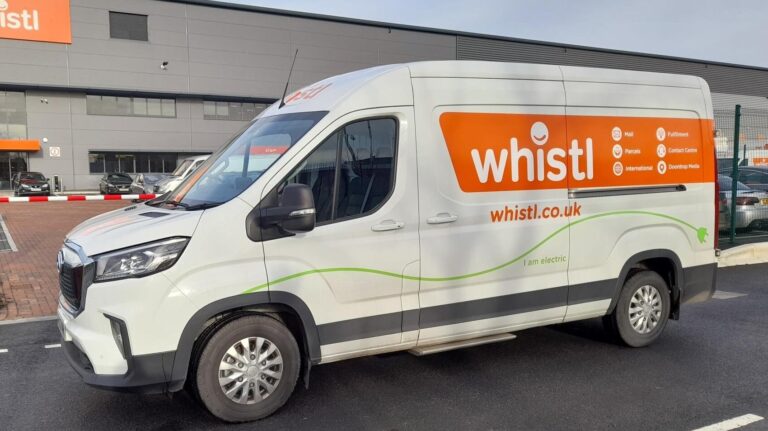Whistl has created a strategy to achieve net zero emissions in its operations by 2045.
Through the calculation of science-based emissions reduction targets, the company has taken a pragmatic approach that is broken down into two stages. From a baseline of 2022, the short-term aim is a 21% emissions reduction by 2030. By 2045 Whistl expects to have reduced by 95% its annual carbon dioxide equivalent emissions, to under 37,544 tons.
Earlier in 2023, following extensive consultation with employees and external stakeholders, Whistl launched its environment, social and governance (ESG) strategy based on three pillars: valuing colleagues, fulfilling opportunities and preserving the natural environment. The net zero strategy is part of the third pillar, with the following areas as part of its decarbonization program: fleet, facilities, waste management, supplier engagement, training and communication. For its fleet goal, Whistl intends to have a 100% zero- and ultra-low-emission small van fleet by 2030 and a 100% zero- and ultra-low-emission HGV fleet by 2040.
 Whistl also plans to achieve 100% procured renewable electricity across all its sites by the end of 2025 and have zero operational waste to landfill by the end of 2025. Alongside this, the company will collaborate with its carriers and suppliers to obtain carbon data and set science-based net zero targets through a supplier engagement program. To support Whistl’s training and communication goals, 80% of the firm’s personnel will complete sustainability and net zero-related training by the end of 2024.
Whistl also plans to achieve 100% procured renewable electricity across all its sites by the end of 2025 and have zero operational waste to landfill by the end of 2025. Alongside this, the company will collaborate with its carriers and suppliers to obtain carbon data and set science-based net zero targets through a supplier engagement program. To support Whistl’s training and communication goals, 80% of the firm’s personnel will complete sustainability and net zero-related training by the end of 2024.
Nigel Polglass, chief operating officer and ESG board sponsor of Whistl, said, “Our aim is to be a sustainable business, not only financially but also within the environment and communities in which we operate, and I am delighted that we are able to announce our ambition to achieve net zero by 2045. We believe in taking a science-based approach to this important issue. Particularly in the logistics sector, we are dependent on innovation and collaboration from our suppliers to enable us to reach this goal. We also look forward to developing new products and services for our customers that will enable them to reach their own carbon reduction targets.”
Read more key sustainability updates from the parcel and postal technology industry, here.


